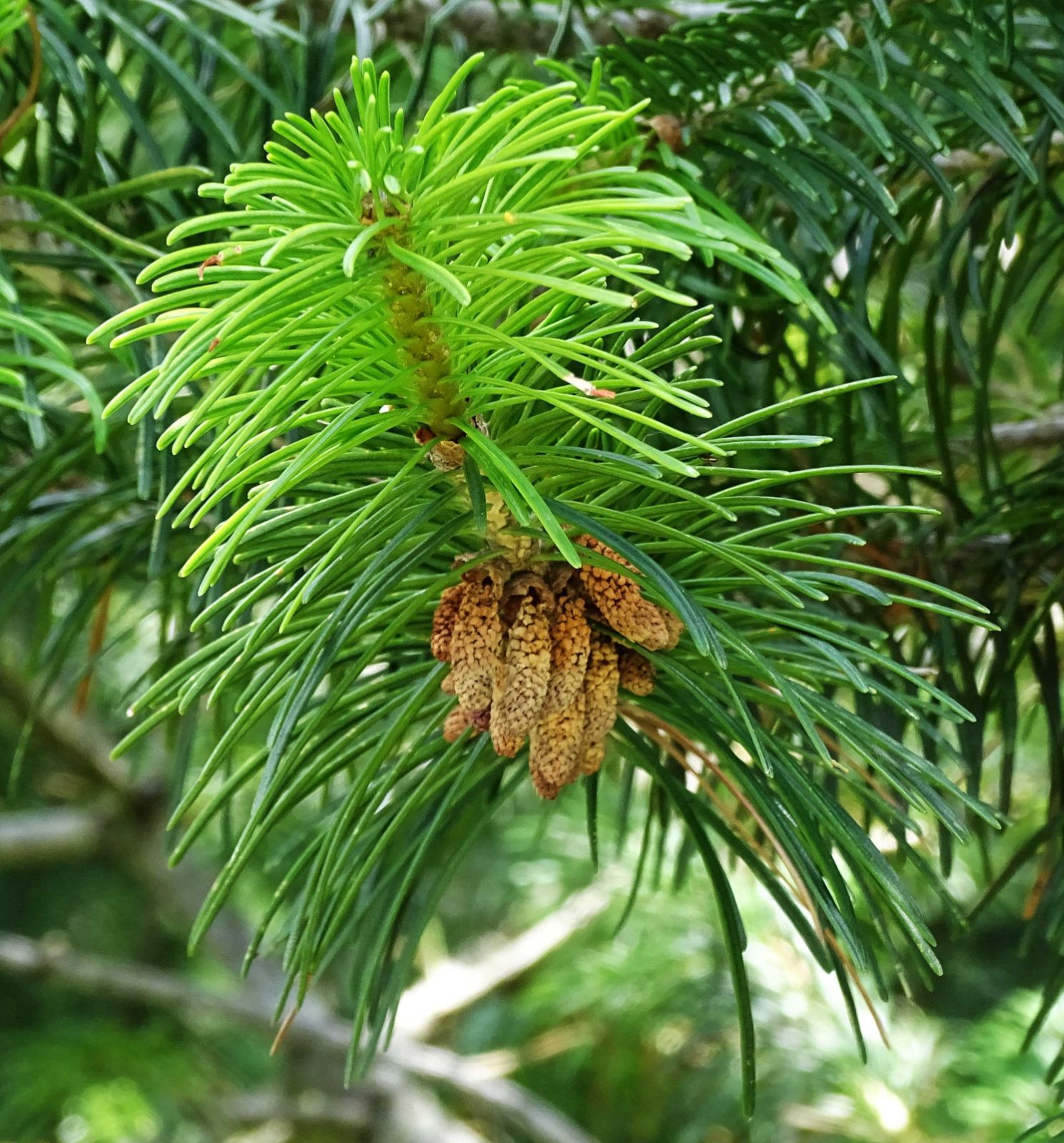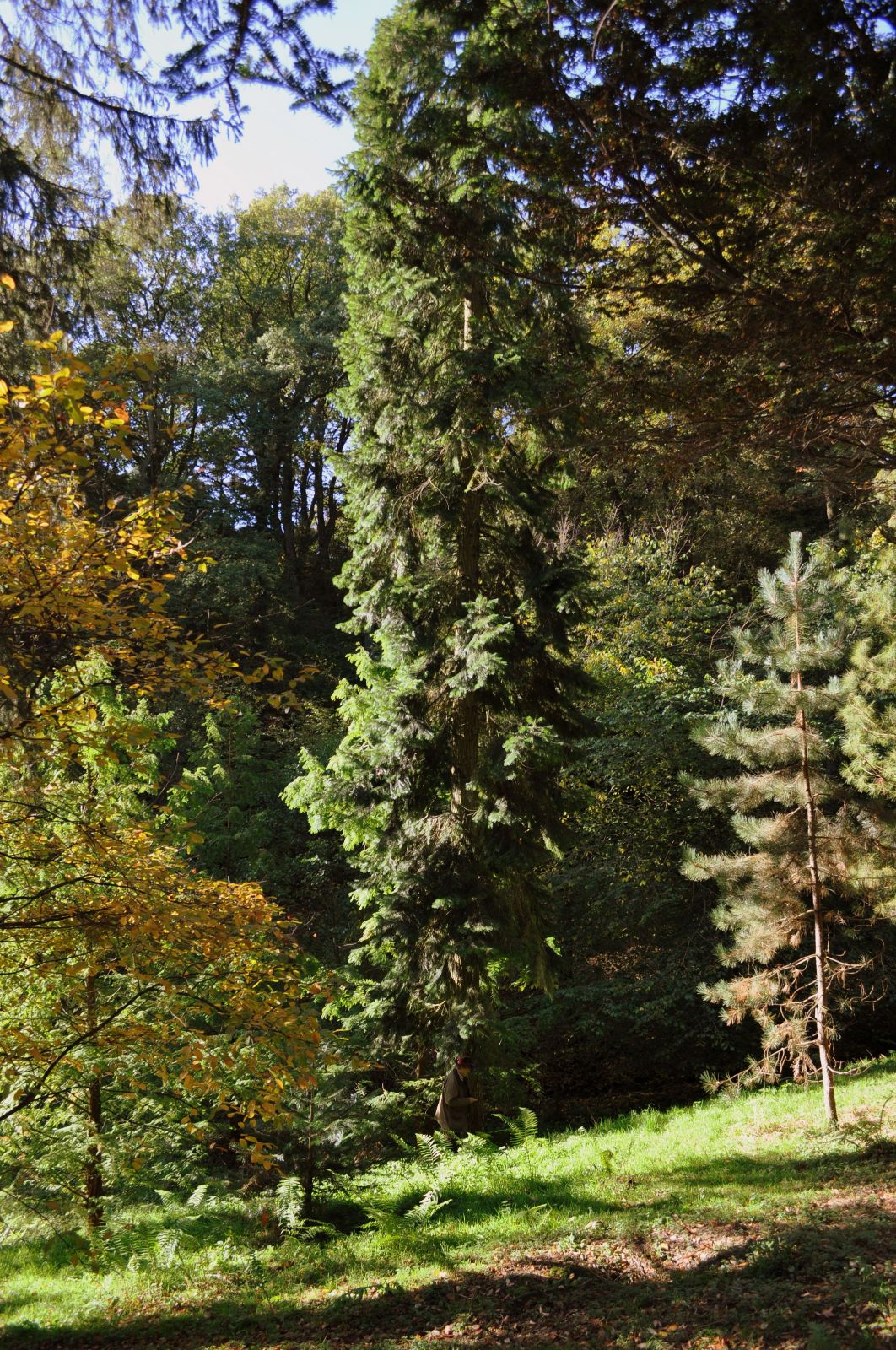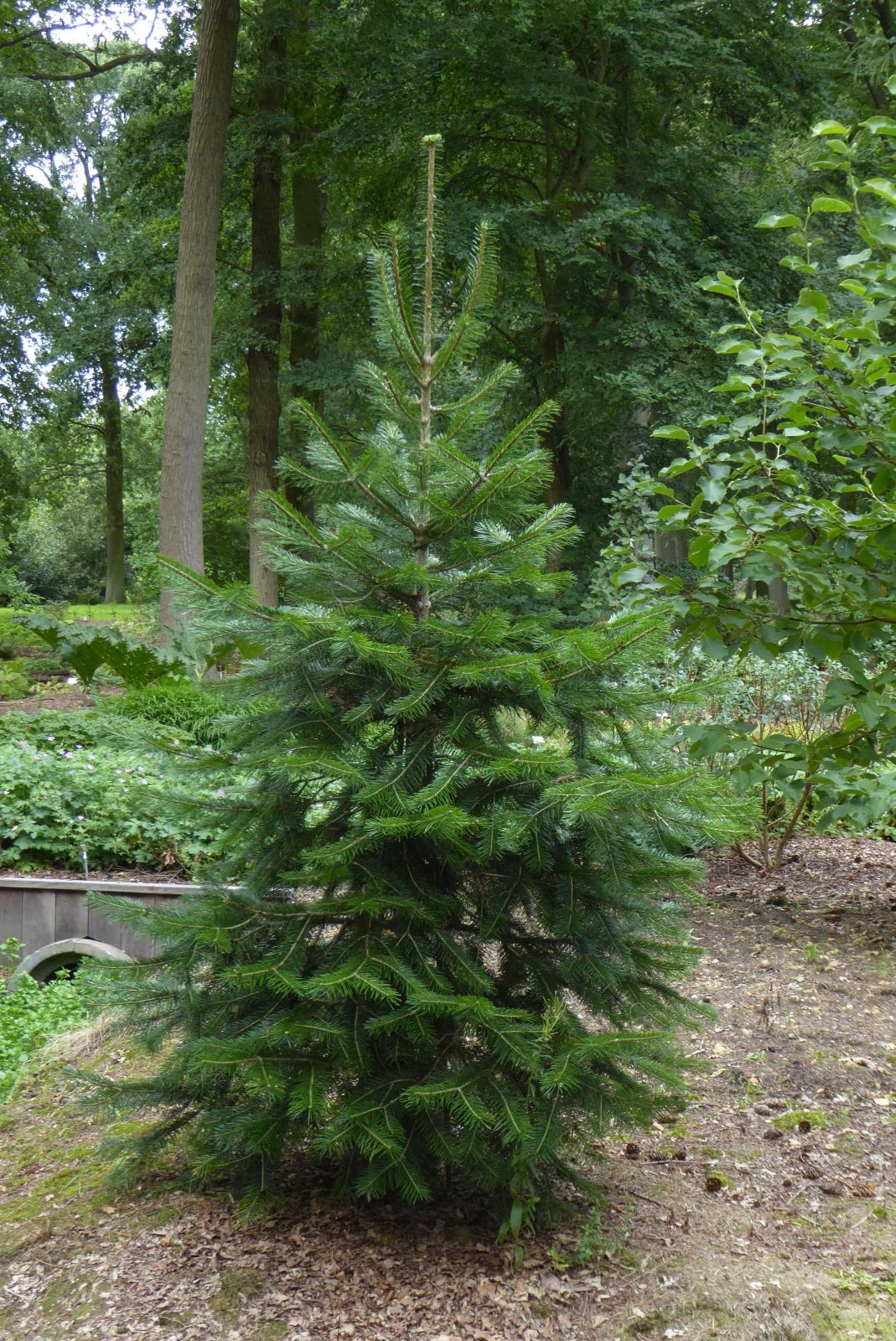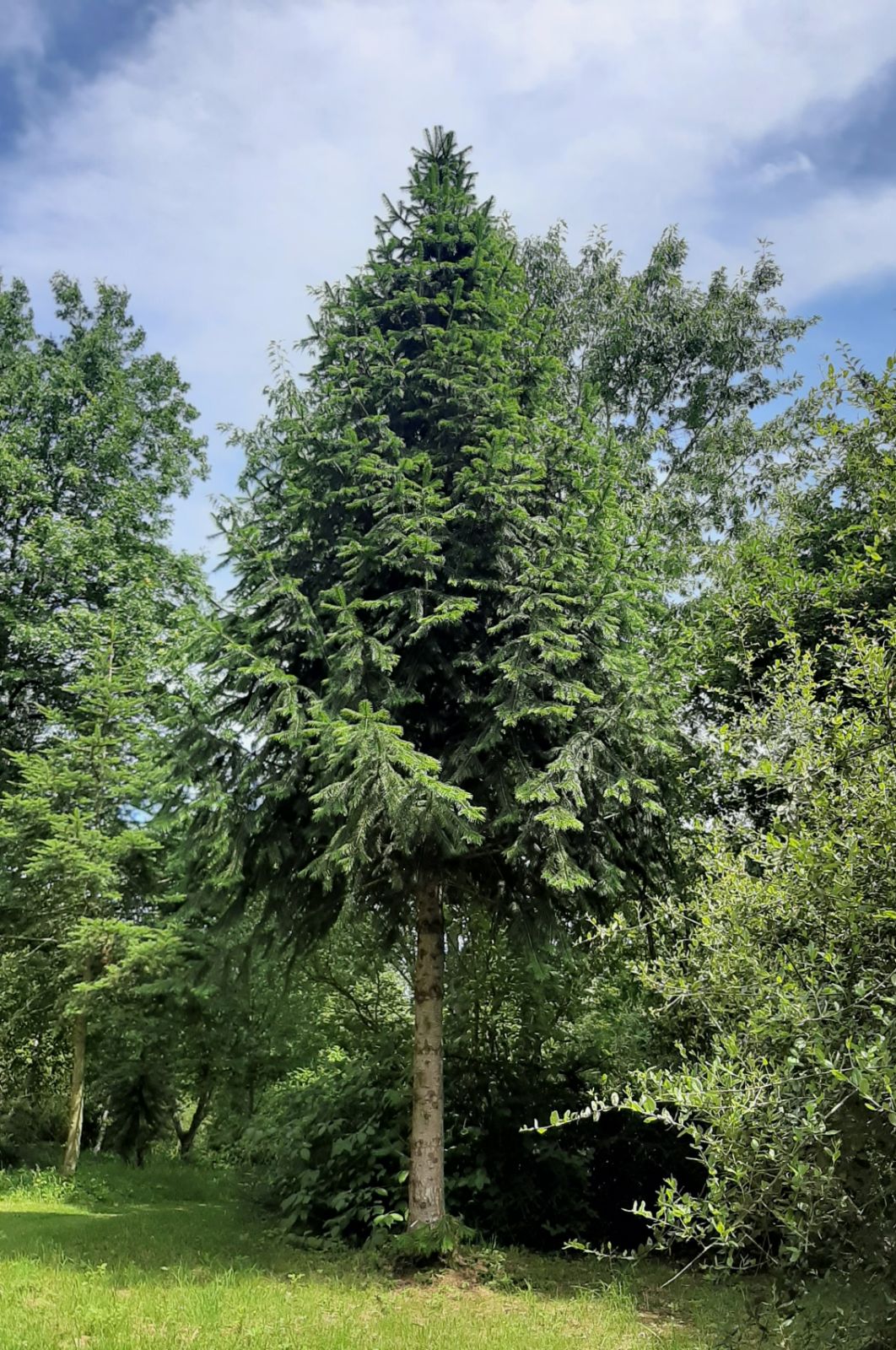Abies pindrow
Sponsor
Kindly sponsored by
Sir Henry Angest
Credits
Tom Christian (2021)
Recommended citation
Christian, T. (2021), 'Abies pindrow' from the website Trees and Shrubs Online (treesandshrubsonline.
Genus
Common Names
- Pindrow Fir
- Pindrai
- West Himalayan Fir
Other taxa in genus
- Abies alba
- Abies amabilis
- Abies × arnoldiana
- Abies balsamea
- Abies beshanzuensis
- Abies borisii-regis
- Abies bracteata
- Abies cephalonica
- Abies × chengii
- Abies chensiensis
- Abies cilicica
- Abies colimensis
- Abies concolor
- Abies delavayi
- Abies densa
- Abies durangensis
- Abies ernestii
- Abies fabri
- Abies fanjingshanensis
- Abies fansipanensis
- Abies fargesii
- Abies ferreana
- Abies firma
- Abies flinckii
- Abies fordei
- Abies forrestii
- Abies forrestii agg. × homolepis
- Abies fraseri
- Abies gamblei
- Abies georgei
- Abies gracilis
- Abies grandis
- Abies guatemalensis
- Abies hickelii
- Abies holophylla
- Abies homolepis
- Abies in Mexico and Mesoamerica
- Abies in the Sino-Himalaya
- Abies × insignis
- Abies kawakamii
- Abies koreana
- Abies koreana Hybrids
- Abies lasiocarpa
- Abies magnifica
- Abies mariesii
- Abies nebrodensis
- Abies nephrolepis
- Abies nordmanniana
- Abies nukiangensis
- Abies numidica
- Abies pinsapo
- Abies procera
- Abies recurvata
- Abies religiosa
- Abies sachalinensis
- Abies salouenensis
- Abies sibirica
- Abies spectabilis
- Abies squamata
- Abies × umbellata
- Abies veitchii
- Abies vejarii
- Abies × vilmorinii
- Abies yuanbaoshanensis
- Abies ziyuanensis
Trees to 60 m tall, to 2.5 m dbh. Crown narrowly conical or pyramidal, becoming more open and irregular with significant age. Bark smooth, grey or pinkish- or brownish-grey in young trees, becomming longitudinally fissured and breaking into irregular plates in older trees. First order branches short, spreading, assurgent at first, horizontal with age, finally downcurved, the tips horizontal; second order branches horizontal or slightly downswept. Branchlets stout, firm, pale pinkish-grey or grey-brown at first, maturing glossy whitish-grey in their first year, dull whitish-grey thereafter, faintly ridged and grooved, glabrous. Vegetative buds ovoid-globose, 6–8 mm long, very resinous at first. Leaves borne somewhat radially, loosely pectinate in arrangement, often only narrowly parted above the shoots, forwards, those of upper ranks strongly forward and somewhat adpressed to the shoot, 2–7(–9) cm × 1.3–2 mm, twisted at base, rich dark green above with a central groove, with two greenish-white stomatal bands beneath, apex bifid or strongly emarginate, rarely obtuse. Pollen cones crowded, 1–1.5 cm long, yellowish. Seed cones short-pedunculate, cylindrical to ovoid-cylindrical, base cuneate, apex obtuse, 10–14 × 5–6 cm, violet-blue when immature, ripening through blue to dark purplish-brown; seed scales flabellate, to 2.5–3.5 × 3–4 cm at midcone; bracts fully included at maturity. (Farjon 2017; Debreczy & Rácz 2011).
Distribution Afghanistan China extreme western Xizang (Tibet) (?) India Nepal westernmost areas Pakistan
Habitat Mountain forests at 2000–3300 m asl, in pure stands or with a broad range of associates over its large range. It is replaced at altitude by Abies gamblei and A. spectabilis, the latter only in the extreme east.
USDA Hardiness Zone 5-7
RHS Hardiness Rating H7
Conservation status Least concern (LC)
Where it thrives Abies pindrow is one of the most beautiful of all the firs. The short branches give trees a neat, narrowly conical profile in youth. Later, they nod in a shallow serpentine curve, their tips held horizontally or nearly so, and all along the shoots the lax, long needles, among the longest of any fir, are swept both forward and downward, leaving the uppermost part of the shoots exposed, their whitish-grey colour well defined among the feathery, lustrous green needles. The overall effect is graceful in the extreme and diagnostic even from a distance.
In the wild it is native to the western part of the Himalayas, from Afghanistan and the Kashmir Himalaya east as far as western Nepal. Several works suggest it just gets into extreme south west Tibet, but it is not discussed in the Flora of China (Fu, Li & Mill 1999). Its range partially overlaps with that of A. spectabilis, but where the two grow in the same area they are generally separated by altitude, with A. pindrow found at lower elevations. It commonly grows in gorges and on very steep slopes, and in the best locations trees have been recorded at over 60 m tall (Debreczy & Rácz 2011).
Debreczy & Rácz observe that ‘In the drier western Himalayas with a shorter wet monsoon period it is a main component of the fir-cedar forests with Cedrus deodara, reminiscent of the Abies cilicica/Cedrus libani forests of…Turkey’ (Debreczy & Rácz 2011). Occurring as it does at middle elevations it has a broad range of associates, including many broadleaves such as Aesculus indica, Quercus spp., and Corylus jacquemontii. Besides Cedrus, its common coniferous associates include Picea smithiana, Pinus wallichiana and Tsuga dumosa. At the higher end of its elevation range, where it dominates, the understorey diversity decreases and is often dominated by rhododendrons; in such woods Juniperus indica mingles with the trunks of the fir.
Details of its introduction to the west are few. Dr Royle (of Rhododendron roylei fame) introduced A. pindrow in 1837 (Johnson 1875) but Elwes & Henry do not discuss this, nor any subsequent early introductions, of which there must have been several (Elwes & Henry 1906–1913). Alan Mitchell suggested ‘Original trees survive at Dropmore, (just alive), Smeaton Hepburn, and probably at Monk Coniston’ (Mitchell 1972) and gives the planting dates at the first two locations as 1844. Jacobson (1996) notes that the species arrived in North America ‘by 1850’. (Incidentally, Jacobson gives credit for the introduction to Britain to one ‘Dr. J. Forbes’, seemingly contradicting other accounts, but Royle’s full name was John Forbes Royle, which explains that discrepancy).
Following its introduction A. pindrow was found to grow extremely well in most areas of the UK and Ireland. It could be slow to get going, and it would prove susceptible to late frosts, but overall it performed well. A truly beautiful young tree in Maurice Foster’s Kent garden demonstrates perfectly why Victorian planters enthused over it (pers. obs. 2017) but in keeping with nearly all Asian firs it will only truly excel in the west and north of Britain. For many years the finest tree on record was one that grew at Castle Leod, outside Dingwall in Rosshire, Scotland. When last measured in 1966 it was 35.5 m × 1.29 m dbh, and although it died in 1978, its record wouldn’t be matched until 2013 when Owen Johnson recorded a tree of equal height in a private garden close to the northern tip of Loch Ness. Several others are hot on the heels of this new champion: there are individuals exceeding 30 m in the Highlands and Aberdeenshire, in Cumbria, in Herefordshire, and at Fota House in Ireland (Tree Register 2020). The Herefordshire tree grows at Eastnor Castle and is believed to have been planted in 1871. Not far away at Hergest Croft another large tree, 28 m in 2013 and growing in the sheltered environment of Park Wood, has developed into a tree more beautiful than most.
The species was seemingly absent from the Arnold Arboretum when Warren & Johnson made their survey of firs growing there (Warren & Johnson 1988) but it is now represented by two accessions (Arnold Arboretum 2020). Jacobson (1996) notes specimens in the Pacific North West, where it should be expected to thrive. It is cultivated in mainland European collections, for example at Arboretum Wespelaar in Belgium (Arboretum Wespelaar 2020), at Hørsholm in Denmark (University of Copenhagen 2020), but perhaps most notably at Gothenburg Botanic Garden in Sweden, where a remarkable planting of over 100 individuals in the landscape arboretum promises to form, in time, one of the finest views of this species anywhere outside its native range (pers. obs. 2020).
The young forest in Gothenburg was grown from seed gathered on the Swedish Expedition to Pakistan in 1983, from c. 3000 m asl in the Kaghan Valley in Mansehra District of Khyber-Pakhtunkhwa, in northern Pakistan (Aldén 2006). This is a short horizontal distance from the Swat Valley, from where several other introductions have been sourced in recent years, notably those at Wespelaar. Among recent introductions to the UK are those of Howick & McNamara, numbers 1806, 1810, 1816, 1839, and 1863, all from Himachal Pradesh. These are represented at multiple collections including Howick, Bedgebury, Kew, Edinburgh (including its regional gardens Benmore and Dawyck), and others. McBeath 1728 is from the same area, and these and the H&M collections have all been slow to establish in UK collections, but typically beautiful once finally settled and putting on good growth.
















